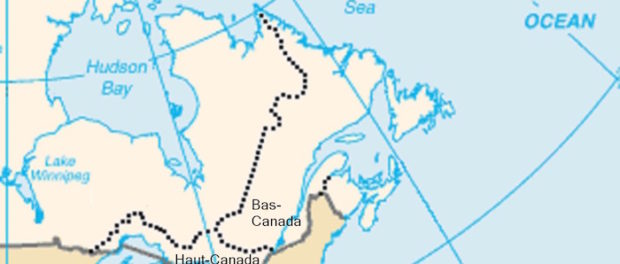1791: The First Constitutional Act & Other Quebec Curios
Part of “A Colony in Transition, 1763-1791”
While George III lost the American Revolutionary War, he did not lose the Thirteen Colony’s most important northern neighbours, the Province of Quebec. With a rapid influx of the English Loyalists that happened after the American Revolution and France having its own Revolution starting in 1789, England wanted to cinch its control over its remaining North American colonies but also give the Province of Quebec equal rights to that of their fellow colonies.
A text with fifty different articles, this document laid the groundwork for the beginnings of a modern Canada. The Province of Quebec was split into two different provinces: the Province of Lower Canada (modern-day Quebec and Labrador) and the Province of Upper Canada (Ontario). From the very second article, the document grants each Province three institutions: a Legislative Assembly, an Executive Council, and a Lieutenant-Governor. Overarching these institutions was the Governor of the Canadas, who was also responsible for the other British territories surrounding the Canadas such as Nova Scotia and New Brunswick. Echoes of a later document can also be heard in the 1791 Constitutional Act, with one of the Act’s very first articles establishing these three institutions to preserve the “Peace, Welfare, and good Government” of the colonies.
Far from perfect, the Constitutional Act had deliberate flaws in its governance: while the Assembly was composed of people that could be elected by the people, the people who elected this Assembly had to have a minimum amount of property to their name. Depending on the English laws or the Coutume de Paris, this either virtually or wholly excluded the participation of women. While the Assembly could propose laws, the Lieutenant Governor could also unilaterally veto the will of the people. The Assembly could also veto the budget of the Province, leading to major problems in the functioning in government, especially if these vetoes were a recurrent event. While it was a democracy in theory, in reality, it was far from one.
The Act laid the preliminary borders for the present-day Quebec-Ontario border, following the natural division created by the Ottawa River. The proposition for such a split was made by none other than Guy Carleton, who was Lord Dorchester at last. Carleton had left Canada for greener, more English pastures; his successor would become Lieutenant-Governor of Lower Canada. However, Carleton was still the Governor General of the Canadas. He would remain in England, serving in the House of Lords, until 1793, when he came back to be present in the new Canadas.
In the years following the Constitutional Act and the reorganisation of the colony, the Canadas in Britain would have to find a new identity. This identity would be found in a conflict with their neighbours in the next decade and between the two Provinces themselves in a bloody rebellion that almost threaten to divide the Canadas even further.
Read a copy of the 1791 Constitution Act here. The next thematic in the series will be “The Canadas in Britain” 1792-1827.






